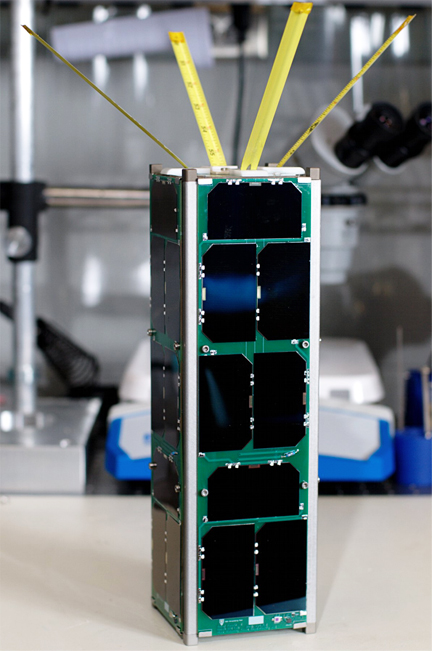
The RAX nanosatellite.
...naturally occurring auroral turbulence recorded using a nanosatellite radar receiver. The research was done with support from the National Science Foundation (NSF) and NASA's Educational Launch of Nanosatellites (ELaNa) Initiative. The distinctive radar echoes recorded on March 8th were taken with the Radio Aurora Explorer (RAX) CubeSat. The RAX nanonsatellite measured turbulence over Fairbanks, Alaska, that was a direct result of a geomagnetic storm triggered by the largest solar flare in the past five years. The Earth's high latitude ionosphere, a region of the upper atmosphere associated with solar-driven aurora or "northern lights," becomes highly unstable when large currents flow during geomagnetic storms. RAX was specifically designed by SRI and the University of Michigan to measure this auroral turbulence from an orbital vantage point inaccessible to traditional ground-based radars.
"The RAX radar echo discovery has convincingly proved that miniature satellites, beyond their role as teaching tools, can provide high caliber measurements for fundamental space weather research," said Therese Moretto Jorgensen, Ph.D., Geospace program director in the Division of Atmospheric and Geospace Sciences at the National Science Foundation. The project's mission was to use small satellites called CubeSats to remotely explore formation of charged particle filaments created in response to intense electrical currents in space. These plasma structures, a form of turbulence called field-aligned irregularities (FAIs), can distort communication and navigation signals such as global positioning systems (GPS). During the recent solar flare, RAX measured FAI echoes using the Poker Flat Incoherent Scatter Radar (PFISR), an NSF research radar operated by SRI.
"The recently collected radar echoes allow us to determine the root cause and to possibly predict future disturbances in the auroral ionosphere - disturbances that can severely compromise communication and GPS satellites," said Hasan Bahcivan, Ph.D., a research physicist in SRI's Center for Geospace Studies, and principal investigator of the RAX mission. A team of University of Michigan students under the direction of James Cutler, Ph.D., an assistant professor in the Aerospace Engineering Department, designed, built, and operated the satellite and gathered the radar echo data.
RAX was the first CubeSat to be selected as part of an NSF program to use small satellites for space weather and atmospheric research. The RAX CubeSat is a three liter satellite weighing three kilograms. It was launched by NASA on October 28, 2011, and has since completed 18 experiments.

